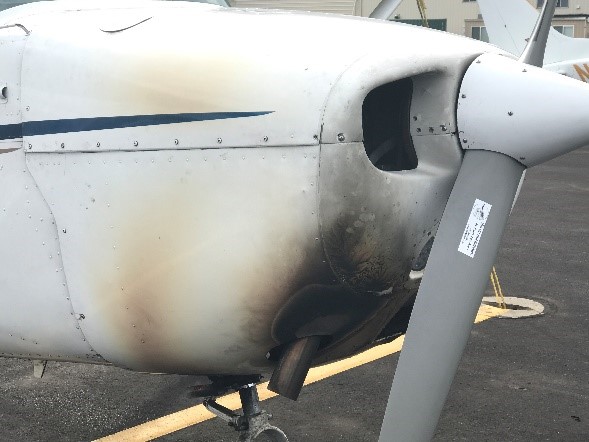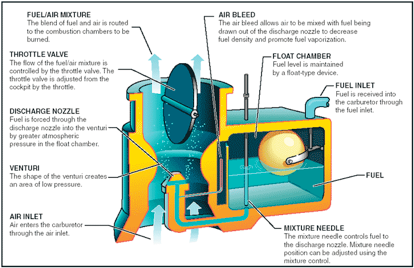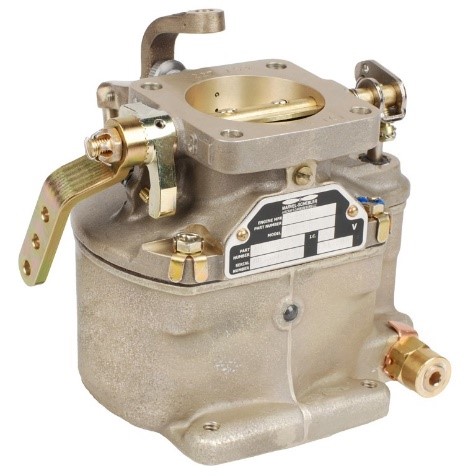The engine primer system may be one of the most mis-understood controls in the cockpit. On these cold winter days, with overnight temperatures in Colorado sometimes dipping into the single digits, when you’re trying to start a cantankerous piston engine. Primer is your friend, but if you don’t treat it and use it correctly, it can be worse day you have in aviation.
The Basics on Primers
- Much like a medical syringe, the primer control fills with fuel when you pull, and then moves that vaporized fuel directly into the cylinder intake port (notinto the carburetor, as some believe).
- This process is a direct fuel to cylinder action. This is different than a carburetor, which proportionally mixes atomized fuel with air.
- You will find a manual primer on carbureted piston engines; not on fuel-injected engines which do not use a CARB HEAT. You can get another clue in determining whether your engine is carbureted rather than fuel-injected is if you have an electric fuel pump.)
Refer to the P.O.H. of your aircraft for how and when to fuel prime your engine. Some manufacturers recommend always priming; some say to only prime if the engine doesn’t first start without a prime. Next, you have to reconcile what the P.O.H. says with how a specific engine actually behaves. Engines in similar airplanes may require slightly different starting procedures, due to different compressions and mag timing. Try to learn the best way to start the engine on any airplane you’re going to fly. Many times this advice can be obtained by asking the owner or another pilot familiar with that airplane.
The P.O.H. for the Cessna 172N says to follow these steps regarding priming (Amplified Procedures under Normal Procedures section):
In warm temperatures, one or two strokes of the primer should be sufficient. In cold weather, up to six strokes of the primer may be necessary. If the engine is warm, no priming will be required. In extremely cold temperatures, it may be necessary to continue priming while cranking the engine. Weak intermittent firing following by puffs of black smoke from the exhaust stack indicates over-priming or flooding. If the engine is under-primed (most likely in cold weather with a cold engine) it will not fire at all, and additional priming will be necessary.
There are additional tips related to priming in the Cold Weather Operation section, including continuing to prime after engine start until it is running smoothly. Read your P.O.H.
Here’s what the Pilot’s Handbook of Aeronautical Knowledge has to say about fuel primers (page 6-25):
The fuel primer is used to draw fuel from the tanks to vaporize fuel directly into the cylinders prior to starting the engine. During cold weather, when engines are difficult to start, the fuel primer helps because there is not enough heat available to vaporize the fuel in the carburetor. It is important to lock the primer in place when it is not in use. If the knob is free to move, it may vibrate out during flight and can cause an excessively rich mixture. To avoid over-priming, read the priming instructions for the aircraft.
After the flight, if you try to shut down the engine by pulling the mixture control to idle cut-off, but the engine continues to chug and chortle, check the primer control to be sure it’s locked. If it’s unlocked and protruding even just a fraction of an inch, well, that’s going to port enough raw fuel directly into the cylinders to keep the engine firing.
LESS IS A LOT MORE
It’s best to begin with the least amount of priming necessary to get the engine started, progressively priming more and more until a successful start is achieved. The worst-case scenario in under-priming is that the engine won’t start. Worst-case scenario in over-priming is the possibility of a backfire leading to an engine fire.
on’t pump the primer; you need to slowly pull it all the way out so it can fill with fuel. If you pull it out and push it back in rapidly, you’re merely pumping air — not fuel — into the intake system. You should hear — and feel — the primer tube fill with fuel. I’ve seen airplanes where the fuel line is blocked or has come off the back of the plunger, and the primer freely moves in and out, with obviously no fuel getting loaded into it. This scenario needs to be squawked and looked into by an A&P.
Pumping the throttle on most carbureted engines activates something known as an accelerator pump. Because so little fuel enters the carburetor at low (closed) throttle positions, the accelerator pump does just what its name advertises: pumps more
go-juice into the carburetor. This extra fuel prevents the engine from missing or stumbling until the fuel system can catch up with the needed fuel flow requirement. The accelerator pump is located on the bottom of the fuel bowl of the carburetor. Due to the ‘updraft’ design of the carburetor, it’s possible to pump so much fuel into the carburetor that it overfills the fuel bowl and begins to drip out the bottom of the cowling. We call this a fire-starter; which is what could happen with all that fuel and fumes out in the open under the cowling if you get a backfire.
My rule is that on those airplanes with an accelerator pump on the carburetor, (essentially all Lycoming’s over 160-HP, with any model of Marvel carb other than the MA-3/5A), you only pump the throttle if it’s necessary to get the engine started, and then only while you’re cranking — not before cranking. Primarily use the primer to start, not the throttle. If you smell fuel, or see fuel inside or under the cowling, well… you’ve over-primed.
GET PRIMED, THEN START IT UP.
Priming should be the very last thing you do before turning the key. If you prime three times and then:
- Search around for the key;
- Look around for people near the airplane;
- Yell “CLEAR!!!” out the window;
- Adjust your seat;
- Fasten your seatbelt;
- Then turn the key….
Well, that’s about the same as not priming at all. The fuel vapor you shot into the intake 30-seconds ago has now evaporated. Do all the stuff in the above list, then:
- Prime the engine;
- Turn the key.
WHEN IS IT GOOD NOT TO PRIME
If the engine is Warm/Hot (it has run in the past few hours), you generally don’t need to prime. First, try to start the engine without any priming. If no joy, then prime it once or twice.
While you’re going through all this priming and starting of cold engines in cold weather, be careful to not overheat the starter (10 Second cranking MAX). If you crank the engine’s starter more than 10 Sec, then you need to wait for it to cool down. And if you don’t burn up the starter, you’ll probably deplete the battery which also doesn’t do well in cold weather. But that’s a topic for another time.
For more on how these carbs work, read this PDF:. Marvel-Schebler Carburetors.pdf





